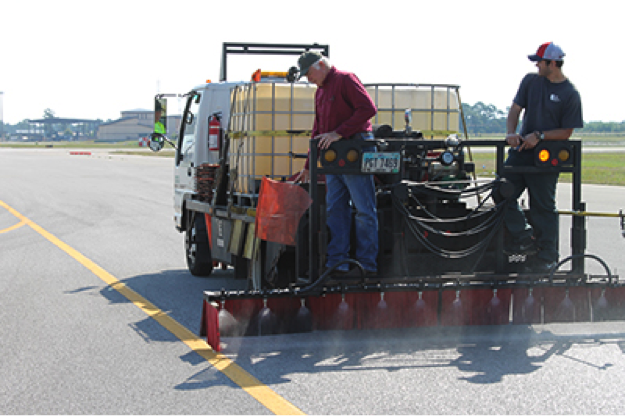Soy Oil Helps Military Clean Up 50 Years of Contamination
May, 2007
Soybean oil has many uses, including cooking oil, biodiesel fuel and now for environmental cleanups and military. The United Soybean Board (USB) and soybean checkoff support research and new uses for soybeans, like the cleanup efforts on a Texas U.S. Navy facility.
The successful remediation, or removal of more than 50 years of contamination – including perchlorate – earned the 9,700-acre facility the “Ready for Reuse” (RFR) determination by the U.S. Environmental Protection Agency (EPA_ and the Texas Commission on Environmental Quality (TCEQ).
The U.S. Navy Weapons Industrial Reserve Plant (NWIRP) in McGregor has been inactive since 1992 and was officially closed in 1995. Between 1966 and 1992, the Navy used the facility to test a wide variety of solid rocket motors that used ammonium perchlorate as a propellant component.
Because of this use, groundwater remediation had to be done before the property could be used for other purposes. So soybean oil was used to help remediate the perchlorate at the McGregor site in two steps. First, soybean oil was mixed with compost, wood chips and crushed limestone to create “biowalls” that were installed in the ground to passively treat groundwater as it flowed through the permeable materials under the natural conditions. Several years later, emulsified soybean oil was injected into the biowalls to sustain the biological community that was degrading the perchlorate.
The addition of emulsified soy oil provides food for the microorganisms and stimulates biodegradation activity. Native bacteria use perchlorate as part of their biological process yielding a nontoxic end product. The soybean oil is necessary for the health and reproduction of these bacteria.
An engineering contractor evaluated and implemented several bench- and pilot-scale treatment systems over an eight-month period. Within three weeks of beginning this test, perchlorate concentrations in groundwater from the trench dropped to below laboratory detection limits. So far, more than 400 million gallons of groundwater have been treated to levels below laboratory detection limits.
The U.S. Navy has returned all but 16.4 acres of this property to the city of McGregor for development by the private sector. Many businesses are finding it an attractive place to establish operations, considerable enhancing the area’s economic outlook.
The soybean checkoff has funded the development and testing of this process with Dr. Robert Borden at North Carolina State University and EOS Remediation, Inc. on similar remediation.

